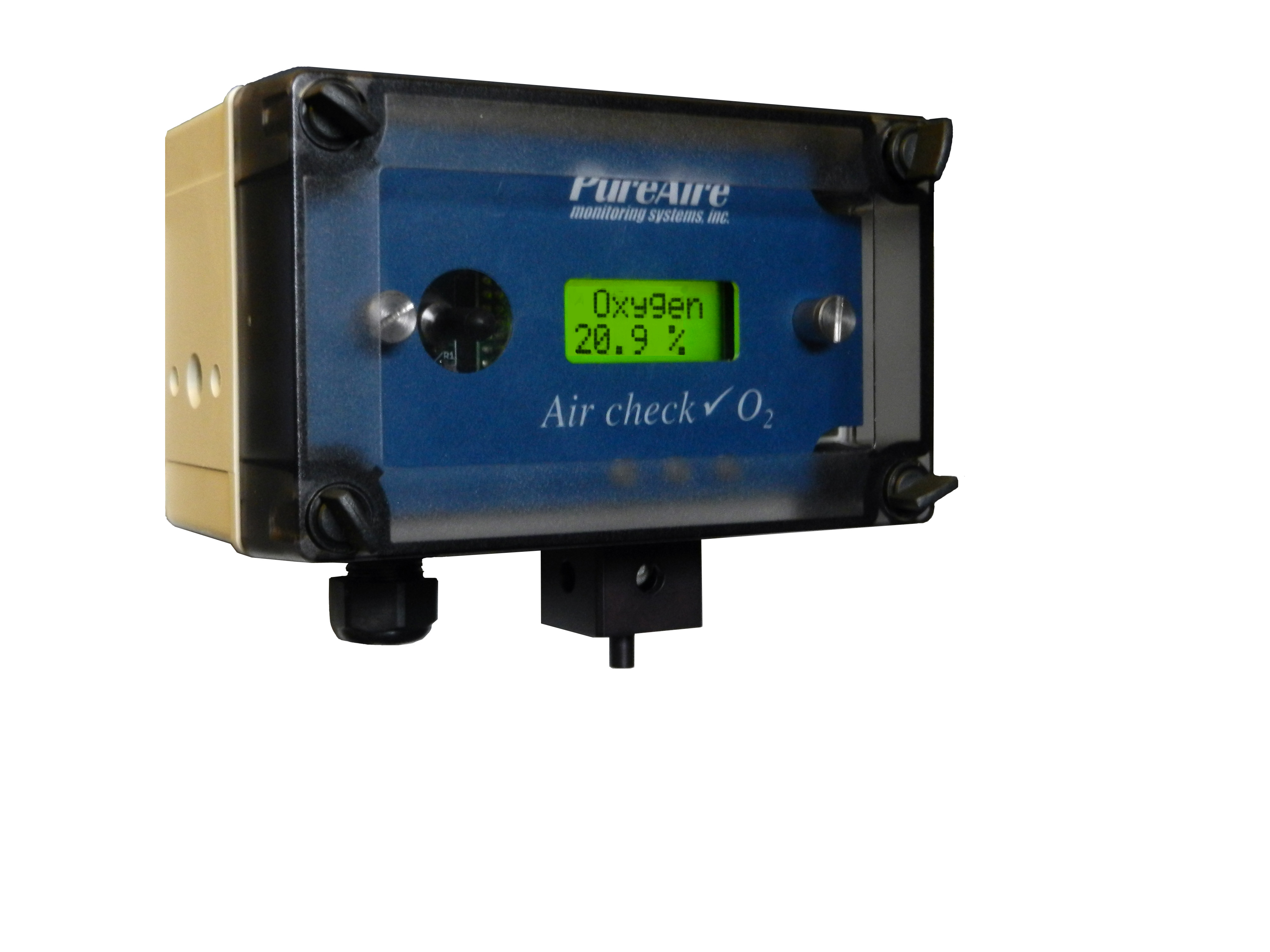Oxygen Monitors for the New Millennium
- By : PureAire Monitoring Systems
- Posted on : March 08, 2013
- News Room
Oxygen monitors have become a required piece of safety equipment for many industrial and laboratory environments, where the release of certain toxics can create an area unsafe for living beings (human or animal). When making a purchasing decision on any oxygen detection monitor, one need look no further than the sensor cell found at the heart of the monitor. While each oxygen deficiency monitor manufacturer will have their on design of the enclosure, along with the display and alarm, it’s the sensor that drives the performance and value of the device.
Enter PureAire Monitoring Systems. Focus on delivering a more accurate solution at a lower cost of ownership became a driving force for Founder and President, Al Carrino. “The consumer deserves a device that ensures a safe environment at a low cost of ownership. I’m not interested in selling replacement sensor cells; I’m interested in building referenceable, happy, and loyal customers, “ says Carrino.
PureAire found the solution in a Zirconium Oxide (ZrO2) sensor, which is designed to last 10+ years with no maintenance. Further, it operates without any environmental drift and is accurate in environments as low as –40º C. The ZrO2 sensor does not rely on partial pressure, or need a reference gas, common to the disposable EC sensor. Also contributing to its lower cost of ownership, unlike EC cells, no electrolyte is required to power the monitor, as all electricity is provided by its 24VDC power source.
In the world of Oxygen (O2) deficiency monitors, there has been little differentiation between manufacturers over the last three decades. The standard has been a disposable electrochemical (EC) sensor, which delivered industry acceptable performance at an economical price. The value was reduced however, due to the need for required frequent maintenance, including monthly and quarterly calibration. This is due to changes in the performance of the cell as it depletes over time and use. Without maintenance, inaccurate readings occur, resulting in false alarms, or worse, no alarm. Other issues include inaccuracies due to the environment. EC sensors are subject to environmental drift with barometric pressure changes, and can fail if put in extreme cold temperatures (a common need for an oxygen deficiency monitor is in freezers). The cost of ownership is further impacted by the need to purchase a replacement cell, when calibration to acceptable standards is no longer possible.
Other features of the PureAire Oxygen Deficiency Monitor is the ability to be linked to any distributed control system or programmable logic controller, and can be placed in a NEMA 4X enclosure for all environmental conditions. Optional user-adjustable alarm relays and audible alarms are available.
Combining the superior performance of the ZrO2 and PureAire’s proprietary technology has changed the playing field, with the consumer coming out the winner.



